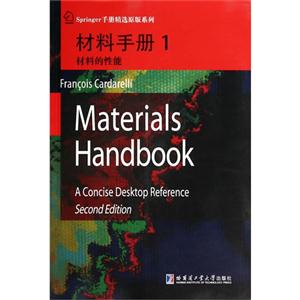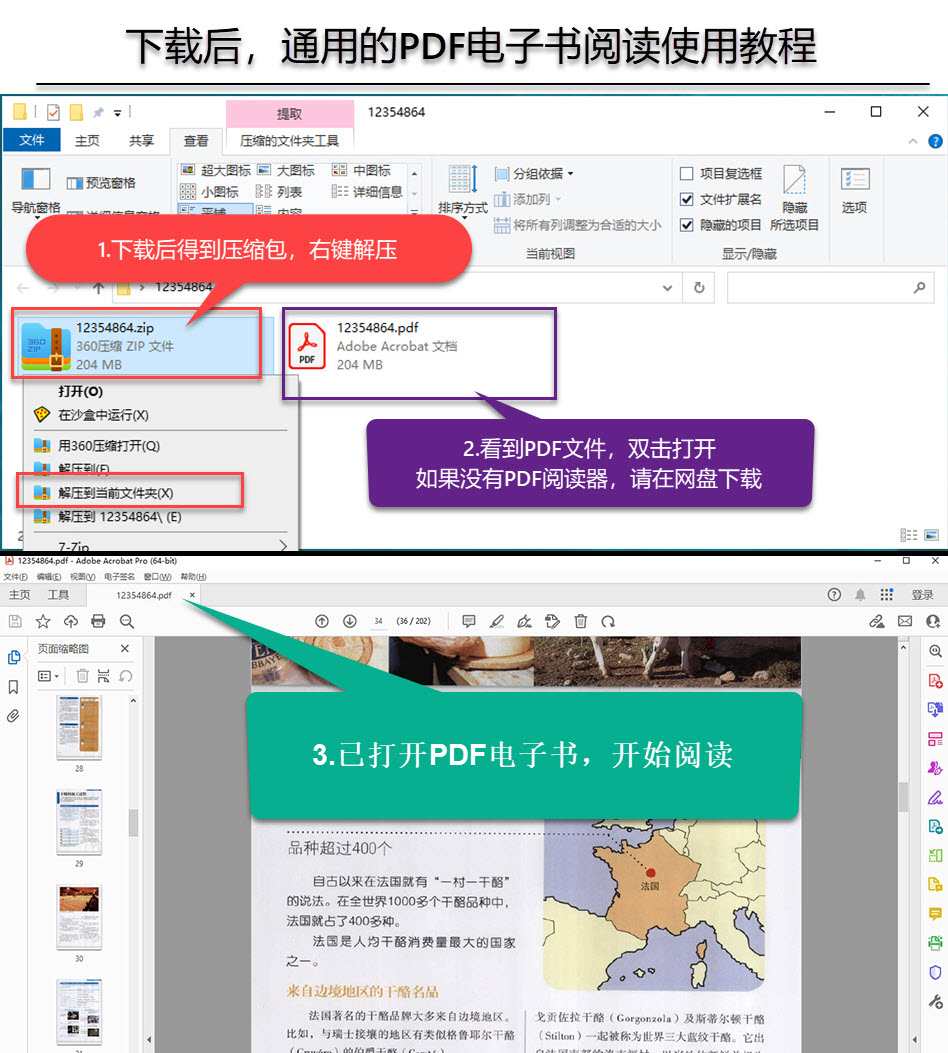材料的性能-材料手册-1
本书特色
[
卡达雷利主编的《材料手册》第二版提供所有类别的材料的物理和化学性质,是一本简洁的手边工具书。第二版与**版的差别是扩大新的家庭用的材料,但重点是每一类常见的工业材料的性能。《材料手册(1材料的性能)》一书为材料性能的介绍,内容为原手册第1章及附录、参考书目、索引等。
]
目录
introduction1 properties of materials 1.1 physical properties 1.1.1 mass density 1.1.2 theoretical density or x-ray density of solids 1.1.3 apparent, bulk, and tap densities 1.1.4 specific weight 1.1.5 specific gravity 1.1.6 buoyancy and archimedes’ principle 1.1.7 pycnometers for solids 1.1.8 density of mixtures 1.2 mechanical properties 1.2.1 stress and pressure 1.2.2 strain 1.2.3 elastic moduli and hooke’s law 1.2.4 the stress-strain curve 1.2.5 strain hardening exponent 1.2.6 hardness 1.2.7 resilience and modulus of resilience 1.2.8 toughness 1.2.9 maximum allowable stress 1.2.10 fracture toughness 1.2.11 brittleness indices 1.2.12 creep 1.2.13 ductile-brittle transition 1.2.14 fatigue 1.2.15 tribological and lubricating properties of solids 1.2.15.1 static friction coefficient 1.2.15.2 sliding friction coefficient 1.2.16 ashby’s mechanical performance indices 1.2.17 order of magnitude of mechanical properties of solid materials 1.3 acoustical properties 1.3.1 velocity of sound in materials 1.3.2 sound intensity 1.3.3 attenuation of sound at a given distance from a source 1.3.4 damping capacity of solids and loss factor 1.4 thermal properties 1.4.1 molar and specific heat capacities 1.4.2 coefficients of thermal expansion 1.4.3 volume expansion on melting 1.4.4 thermal shock resistance 1.4.5 heat transfer processes 1.4.6 thermal conductivity 1.4.7 thermal diffusivity 1.4.8 spectral emissivity 1.4.9 temperature and latent enthalpies of fusion, vaporization, and sublimation 1.4.10 order of magnitude of thermal properties of materials 1.5 optical properties 1.5.1 index of refraction 1.5.2 total reflection and critical angle 1.5.3 specific and molar refraction 1.5.4 refractivity 1.5.5 dispersion 1.5.6 coefficient of dispersion 1.5.7 abbe number 1.5.8 temperature dependence of the refractive index 1.5.9 anisotropic materials 1.5.10 birefringence 1.5.11 albedo and reflective index 1.5.12 electromagnetic radiation spectrum 1.5.13 order of magnitude of optical properties of transparent materials. 1.5.14 macroscopic absorption of light 1.5.14.1 damping constant 1.5.14.2 first law of absorption (bouger’s law) 1.5.14.3 second law of absorption (beer-lambert law) 1.5.14.4 absorbance or optical density 1.5.15 microscopic absorption and emission processes 1.5.16 einstein coefficients 1.5.16.1 einstein coefficient of absorption 1.5.16.2 einstein coefficient of spontaneous emission 1.5.16.3 einstein coefficient of stimulated emission 1.5.16.4 relation between einstein coefficients 1.5.16.5 relations between einstein and extinction coefficients 1.5.17 luminescence 1.5.17.1 excitation 1.5.17.2 internal conversion 1.5.17.3 fluorescence 1.5.17.4 intercombination 1.5.17.5 delayed fluorescence 1.5.17.6 phosphorescence 1.6 other properties 1.6.1 biocompatibility 1.6.2 electronegativity 1.6.3 chemical abstract registry number 1.7 fundamental constants 1.8 conversion factors 1.9 further reading 1.9.1 mathematics and statistics 1.9.2 units and conversion tables 1.9.3 physics 1.9.4 physical chemistry 1.9.5 engineering fundamentals 1.9.6 general handbooks 1.9.7 mechanical properties 1.9.8 electrical properties 1.9.9 thermal properties 1.9.10 metallurgy 1.9.11 materials sciencea background data for the chemical elements a.1 periodic chart of the elements a.2 historical names of the chemical elements a.3 uns standard alphabetical designation a.4 names of transfermiumelements 101-110 a.5 selected physical properties of the elements a.6 geochemical classification of the elementsb nist thermochemical data for pure substancesc natural radioactivity and radionuclides c.1 introduction c.2 mononuclidic elements c.3 nuclear decay series c.4 non-series primordial radionuclides c.5 cosmogenic radionuclides c.6 norm and tenorm c.7 activity calculations c.7.1 activity of a material containing one natural radionuclide c.7.2 activity of a material containing natural u and thd crystallography and crystallochemistry d.1 direct space lattice parameters d.2 symmetry elements d.3 the seven crystal systems d.4 conversion of a rhombohedral to a hexagonal lattice d.5 the 14 bravais space lattices d.6 characteristics of close-packed arrangements d.7 the 32 classes of symmetry d.8 strukturbericht structures d.9 the230 space groups d.10 crystallographic calculations d.10.1 theoretical crystal density d.10.2 lattice point andvector position d.10.3 scalar product d.10.4 vector or cross product d.10.5 mixed product and cell multiplicity d.10.6 unit cell volume d.lo.7 plane angle between lattice planes d.11 interplanar spacing d.12 reciprocal lattice unit celle transparent materials for optical windowsf corrosion resistance of materials towards various corrosive mediag economic data for metals, industrial minerals and electricity g.1 prices of pure elements g.2 world annual production of commodities g.3 economic data for industrial minerals g.4 prices of electricity in various countriesh geological time scalei materials societiesbibliography 1 general desk references 1.1 scientific and technical writing 1.2 chemicals 1.3 plant cost estimation and process economics 1.4 thermodynamic tables 1.5 phase diagrams 2 dictionaries and encyclopedias 3 comprehensive series in material sciencesindex
封面

书名:材料的性能-材料手册-1
作者:卡达雷利
页数:232
定价:¥68.0
出版社:哈尔滨工业大学出版社
出版日期:2014-04-01
ISBN:9787560344478
PDF电子书大小:145MB 高清扫描完整版
本文标题:《材料的性能-材料手册-1》PDF下载
资源仅供学习参考,禁止用于商业用途,请在下载后24小时内删除!

